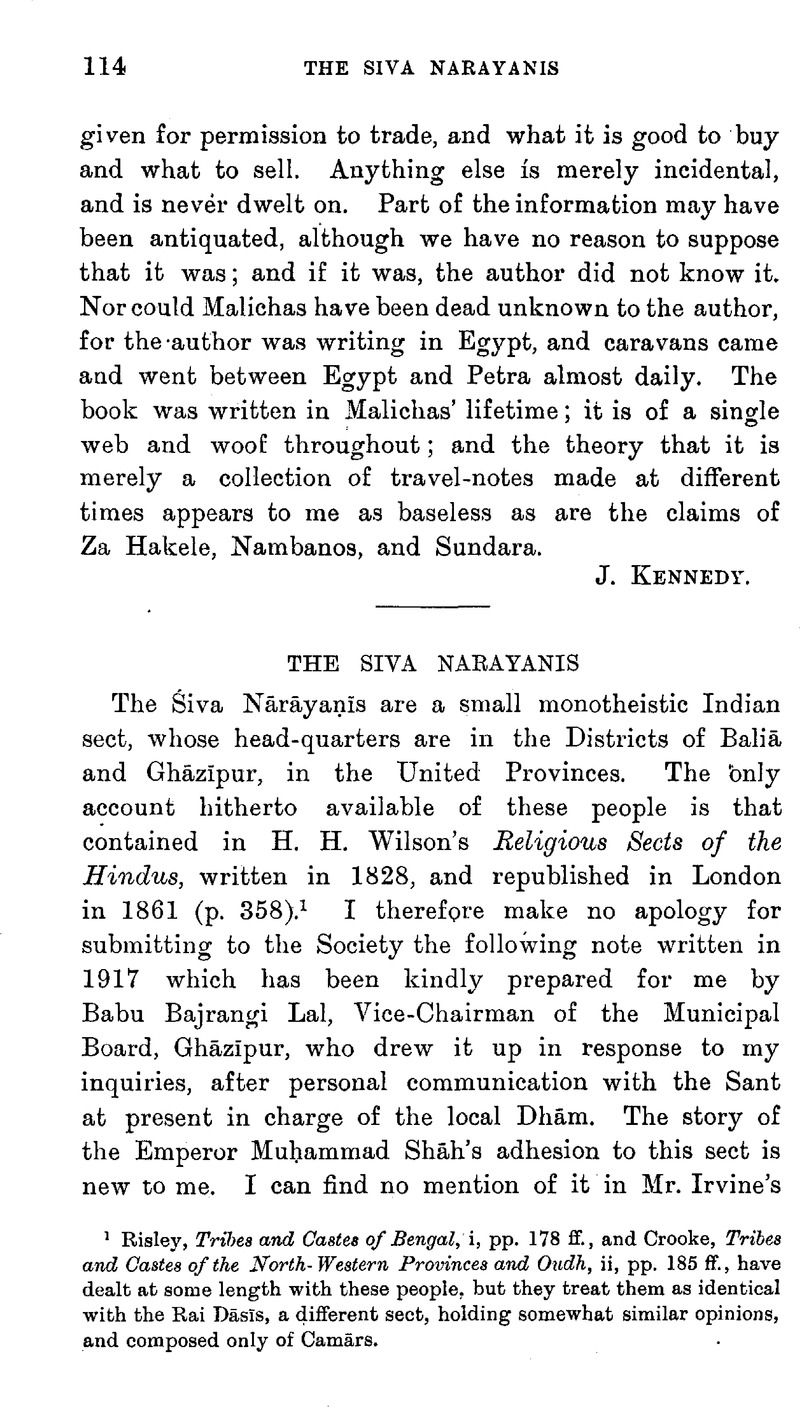No CrossRef data available.
Article contents
Abstract

- Type
- Miscellaneous Communications
- Information
- Copyright
- Copyright © The Royal Asiatic Society 1918
References
page 114 note 1 Risley, , Tribes and Castes of Bengal, i, pp. 178 ffGoogle Scholar., and Crooke, , Tribes and Castes of the North-Western Provinces and Oudh, ii, pp. 185Google Scholar ff., have dealt at some length with these people, but they treat them as identical with the Rai Dāsīs, a different sect, holding somewhat similar opinions, and composed only of Camārs.
page 115 note 1 In the neighbourhood of Candrawār, in the Sarkār of Ghāzīpur, they all say that, by blood a Naraunī, was born the son of Bāgh Rāy.—G. A. G.
page 115 note 2 According to Wilson, in his time they had a college at Balsande.—G. A. G.
page 116 note 1 Wilson says, “Śiva Nārāyaṇīs, of the lower orders, are occasionally addicted to strong potations.”—G. A. G.
page 116 note 2 He taught the texts to Muḥammad Shāh, and taking his seal conducted the sect.—G. A. G.
page 117 note 1 Seek ye the Sat Puruṣa, the Creator, and believe. Recognize Śiva Nārāyaṇa as the illumination of the form of Brahma.—G. A. G.
page 117 note 2 i.e. in Sanskrit, Nirākāraṁ Paraṁ Bráhma, the Formless Supreme Brahma.—G. A. G.


